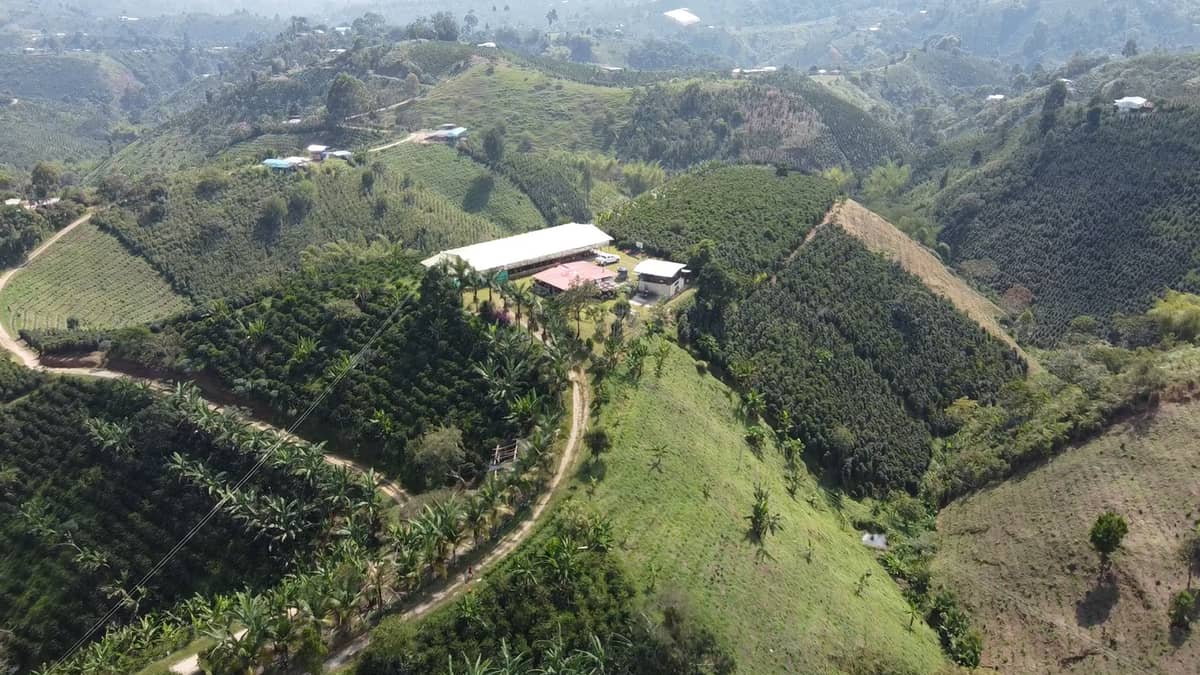
07 Sep 2021
Colombia Monteblanco
This is a coffee that has explored some quite innovative processes and one that has really caught the attention of our sourcing and roasting teams over the past few months. With the introduction of flavour focussed microorganisms and fermentation cultures the processing of this coffee is meticulous and industry breaking / shaking in its approach.
First things first meet Rodrigo
Monteblanco is a family farm managed by Rodrigo Sánchez Valencia in a line of coffee growers that began with his grandfather. Rodrigo grows such varieties as Geisha, Pink Bourbon Pink, Purple Caturra, Red Caturra etc. All of his different lots have developed unique profiles that have achieved a recognition at a world-wide level.
Rodrigo’s team lead all the technical processes from germination, to production, processing and export.
Monteblanco is located within an average temperature between 16 and 22 degrees. The farm uses temperature controlled parabolic dryers, where coffees are dried under shade on African beds. He has a washing extension, with a wet mill where the coffee is de-pulped and fermented, as well as a cooler tank that guarantees a stable temperature between 10 and 14 degrees for the realisation of the cold fermentation processes.

The Fermentation Process
Step 1: The Mother Culture
Rodrigo’s washed processes begins with the creation of a fermentation culture using selected microorganisms, mainly lactobacillus, saccharomyces and cerevisiae. This is much like a mother culture one would create in baking or brewing.
This mother or starter culture is fed and is continually growing and drawn from whenever a new flavour focused starter culture is to be created.
Step 2: The coffee starter
Rodrigo separates about 80L from the “mother culture”, and he will start to feed the starter with a blend of fruits or herbs and always includes a sugar sweetener. This fruit or herb blend encourages the flavour focused microorganisms in the culture, while the sweetener energizes the fermentation and brings the culture’s sugar content to a level that matches the same degrees Brix (dissolved sugar content) in the coffee that will be processed.
In order to maintain life and activity in the starter Rodrigo feeds it with sugars daily. This “starter culture” takes 8 days to reach its optimal state (190 hours of fermentation) in order to reach the appropriate Brix degree and pH value for coffee processing.
Degrees Brix, is the measure of sugar content in a water based liquid solution. 1 degree Brix is 1 gram of sugar in 100 grams of solution.

Step 3: Fermentation
After all these days, the “starter culture” (like in the baking) is taken to the wet mill where they already have their coffee collected, sorted and pulped. They measure the Brix of the coffee mass and match it with this “starter culture”. It’s important to make sure those levels are matching for the microorganisms to travel, survive and multiply. Those 80L of “starter culture” are then added to a sealed fermentation tank with the coffee.According to Rodrigo, it’s very important to work on matching the brix level of the mixture to match the brix degree of the new freshly harvested lot he is about to process, so that the crop can be processed together with the fruit, it can only work if he can obtain the adequate PH and Brix degrees in order for the microorganisms to enter the coffee. Essentially he maintains the same environment in both so that the microorganisms are able to thrive and lead the new ones from the actual coffee mass to work in favour of the desired fruit notes.
For this process, Purple Caturra was chosen due to its versatility in the preparation of any process, thanks to its higher concentration of Brix degrees. It has a great sweetness material that allows the microorganisms to have an optimal area to work.

After the preparation of the cultures, the coffee cherries are cleaned, sorted and de-pulped. The parchment is then put inside 200L plastic baskets which are totally sealed. Rodrigo adds 80 litres of his “starter solution” that is already prepared with the desired flavour.
They incorporate that solution into the coffee and place it to ferment for 150 hours more, they wait until the Brix degrees do not fall below 6 and the PH does not go below 4. This is this ideal point of balance for the coffee in order to create and highlight the notes of the fruit, and also ensuring balance with the coffee taste. Rodrigo intent is not for it to be an invasive flavour, that alters or contaminates the flavour of coffee. His goal is to take the notes of the fruit he is fermenting, without forgetting that the main base for the preparation is coffee.
This process is named after the fruit as they firmly believe in the ethics and truth of what takes place within the process.
